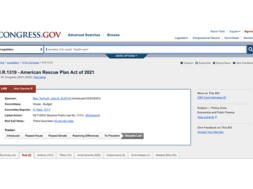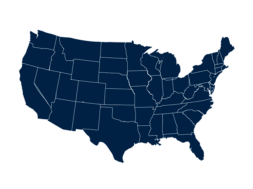
Borrower Defense to Repayment: What You Don’t Know Could Hurt You
By Katherine (Kate) Lee Carey, Special Counsel, Cooley LLP
I usually like to start my articles off with a little humor, but in the case of Borrower Defense to Repayment, that’s a tough charge. The recent happenings around this rediscovered piece of regulation have come in the wake of devastating school closures and heartbroken students. If you have been working in higher education over the past few years, it would have been difficult to avoid the news of the sudden collapse of the Corinthian College chain of schools in 2015 which disrupted the educational plans of thousands of students. The impact was felt most acutely in California, where the campuses were forced to close under the intense financial stress of multiple regulatory investigations and lawsuits. The publicity around the closure forced the U.S. Department of Education (ED or Department) to address what would happen to the federal loans of all of the impacted students. It was in the context of explaining the “closed school discharge” option that ED also provided potentially affected students, including those who were not attending schools that closed, with another option – the “borrower defense to repayment.” This option could be pursued by borrowers who were not enrolled when the school closed, but who believe that their school may have broken a state law that related to their education. This opens the door very wide – essentially telling Corinthian alumni, and essentially any student who ever attended any school and thinks the school acted improperly – that they could be eligible for loan discharge.
If you hadn’t heard of borrower defense to repayment before April of 2015, you are not alone.
Despite having been effective since the mid-1990s, there had only been five applications under this provision in the 20 years that followed, according to ED. This little known, or used, provision, allows a Federal Direct Loan borrower to petition ED to relieve their obligation to repay the loan based on an “act or omission” of their school that “could give rise to a state law claim.” What exactly that means, and how to apply it to the now more than 26,000 plus applications, was a question not even the Department of Education could answer. ED first sought out assistance from a “Special Master,” whose focus was to identify a process to evaluate all of these applications, but it quickly became clear that the regulations’ complete lack of guidance on this provision was going to be a major obstacle. The result was a Department of Education Negotiated Rulemaking to “clarify” the requirements and process which concluded, without consensus, in March of 2016.
I used my air quotes there because what may have started as an attempt to clarify the acts or omissions a borrower can rely on for a defense to repayment claim soon turned into a much broader discussion about institutional responsibilities, financial capability and “early warning signs” of potential problems that some negotiators believe could identify a school at risk of being unable to make good on the loan discharges that ED may grant under the BDTR rule, or worse yet, school closure.
The negotiations themselves became a bit of a spectacle, with appearances by Members of Congress and TV film crews, as well as heated debates about the broadness of the proposals and the lack of time provided for review.
In the end, after nine days of debate over three months, multiple versions of each proposal, and new proposals being added seemingly every day, the rulemaking ended without agreement among the negotiators, meaning that the Department was left to draft its own version of the rules.
On June 16, 2016, the Department issued its proposed rule via a Notice of Proposed Rulemaking, opening the 45-day comment period. The proposed rule does not deviate much from the last version of the drafts circulated during negotiated rulemaking, but in some cases the proposed rule is worse for institutions than the drafts. The preamble provides some interesting insights into ED’s thinking and rationale for their proposals.
Who is covered by the current and proposed new rules?
The borrower defense to repayment option applies to all Direct Loan (DL) borrowers, and thus all institutions that participate in the federal student aid program and offer Direct Loans. The proposed rules would apply to DLs made after July 1, 2017; the current rules will continue to apply to existing loans and those made up until that date, with a few caveats. The existing standard for review – an act or omission that could give rise to a state law claim – remains for those loans, but the proposed rule would apply the new process for reviewing BDTR claims relating to them, and removes the three year limitation that currently restricts ED’s ability to recoup those losses from the school. Thus, a borrower with a pre-2017 loan could make a BDTR claim as long as the underlying “act or omission” is within the statute of limitations for the state law claim, and ED’s ability to pursue the institution for the loss is essentially unlimited.
School administrators should be aware that the proposals go far beyond just assigning financial liability to schools for their students’ successful defense to repayment claims (which it does); the proposal also includes significant new rules about financial capability, including letters of credit, which apply to all DL participating private institutions, both non-profit and proprietary.
A new federal standard for “acts or omissions”
Since the borrower defense option was created in law in 1993, it has provided a legal right for student borrowers to claim that ED cannot collect on their DLs due to the “acts and omissions” of the institution they attended based on state law violations, but without any specific explanation of what the school would actually have to have done to trigger this relief. The proposed rule would establish a new, three-part federal standard that will apply to loans made after July 1, 2017, which creates new claim bases but also retains the students’ right to use a state court judgement as the basis to seek loan forgiveness.
Judgment against the school
A borrower could make a claim if she or he obtains a favorable contested judgment against the school based on state or federal law in a court of competent jurisdiction. A contested judgement in this context means the institution presented a defense and lost (as opposed to a default judgement, where one party does not respond to a claim and the judge orders in favor of the other party). A borrower may assert this as a basis for a claim at any time without regard to any statute of limitations.
Interestingly, in the preamble, ED notes that it will not consider a settlement agreement or dismissal order to be a contested judgement under this provision, but they welcome borrowers to submit court documents such as these as support for claims under the other two options, below.
Breach of contract by the school
A borrower could make a claim if the school she or he attended failed to perform its obligations under the terms of a contract with the student. There are two timeframes under this section: if students make a claim based on a debt they still owe to ED, there is no time limit – they can assert that claim at any time after the alleged breach. For claims to recover amounts previously collected by ED, the student must make the claim no later than six years after the breach.
Substantial misrepresentation by the school
A borrower could make a claim if the school or any of its representatives or third party agents that provide marketing, advertising, recruiting, or admissions services, made a “substantial misrepresentation” that the borrower reasonably relied on. Importantly, the Department proposes to enormously broaden the definition of “substantial misrepresentation” to eliminate the need to prove any intent on the part of the institution to deceive, replacing intent with a “misleading under the circumstances” standard.
The proposed rule also adds that “substantial misrepresentation” includes any statement made by a representative of an institution that omits information in such a way as to make the statement false, erroneous or misleading.
While the proposed rule does require the borrower to prove that he or she relied on the misrepresentation to his or her detriment, the nature of what could be construed as the “false, erroneous or misleading” statement – particularly where no intention to mislead is required to be shown – is so broad as to challenge reasonable interpretation.
The focus on ensuring the claimant actually suffered damage under this type of claim resulted in a heated debate during the rulemaking, specifically relating to ED’s insistence that it have the discretion to determine the amount of the debt that it might discharge. In the proposed rule, ED preserves this discretion and outlines factors it could consider in deciding the “amount of injury” suffered by the borrower. The list includes the variance between the tuition paid versus what a reasonable borrower would have paid but-for the misrepresentation; what a student could have reasonably believed the school was charging versus what was actually charged; and the total amount of the student’s economic loss as reduced by the value of the benefit (if any) of the education.
Additionally, the proposal attempts to clarify what actions by an institution might warrant “reasonable reliance” by the borrower on the institution’s “substantial misrepresentation.” The proposed rule include the following: if the school makes insistent demands that the student’s enrollment- or loan-related decisions be made immediately; putting too much emphasis on negative consequences of delaying enrollment; if the institution makes statements discouraging the borrower from consulting an adviser or family member; the institution’s failure to timely respond to borrower requests for information about costs and financial aid; and otherwise unreasonably pressuring or taking advantage of the borrower’s “lack of knowledge or sophistication.”
A borrower can make a claim based substantial misrepresentation for a debt they still owe to ED at any time, there is no time limit. For claims to recover amounts that they already paid to ED, students must make the claim not more than six years after the “student discovers, or reasonably could have discovered,” the information constituting the substantial misrepresentation. (This is lawyer-speak for allowing time for a student to figure out whether there was a misrepresentation or whether they were damaged.)
The proposed borrower defense claim process for borrowers
When the Department began the discussion of the borrower defense to repayment process in the summer of 2015, it repeatedly stated the importance of establishing a simplified application process for borrowers. At the same time, the Department seemed cognizant that they had to create some threshold to avoid abuse of this option. Given the very public push from borrowers and borrower advocates to make the process extremely easy and completely painless, it was interesting to see that ED’s proposed application process will still require the borrower to complete an application and provide evidence of the school’s wrongdoing, which will be subject to review by ED and (as long as the school is still open), the institution has the chance to respond. The process is a bit less cumbersome for borrowers when ED determines that a group discharge is appropriate – this can be determined based on a number of similar borrower claims or based on information that ED has that it believes warrants group treatment.
If ED determines a group exists, it will create a group claim, even if affected borrowers never filed a BDTR application.
ED will be required to notify any borrower it plans to include, allowing impacted borrowers to opt-out.
Personnel from within the Department will review applications, determine and/or establish group status for claims, serve as advocate for those groups, serve as adjudicator of the claim, and ED will determine the level of damage suffered by individual borrowers. This proposed process caused major concern for negotiators. As one negotiator pointed out, ED has an inherent conflict of interest as the evaluator of these claims, because it has a vested interest in the outcome. In the proposed rule, this concern was not resolved as the role of both borrower advocate and adjudicator remain within the Department.
Process and impact on institutions
Institutions will be impacted on multiple fronts under the proposed rule. Not only does it provide little by way of explanation or assurances that an institution will have an opportunity to respond to students’ claims, it also included expansive new financial capability measures that could negatively impact institutions regardless of whether a single student ever claims a defense to repayment.
The process for individual borrower claims
For individual claims, the proposed rule includes a process in which a borrower submits an application supported with evidence for the claim. ED assigns a “Department official” to investigate the claim using its own records, any response from the institution (which supposes that the school is notified in a timely fashion and allowed the opportunity to respond; there is no notice or timing procedure included in the proposal), and any additional information that ED requests from the borrower. ED will then make a decision and notify the borrower.
For institutions, the most impactful sections provide little guidance. The proposed rule states that ED “may initiate separate proceeding to collect from the school the amount of relief resulting from a borrower defense;” however, there is no real explanation of what the process or procedure will be for institutions either during the review process or in the “separate proceeding.” This is particularly troublesome because the ultimate responsibility for discharged loans will rest with the institution despite the lack of defined process in the rule.
The process for group borrower claims – generally
In the proposed rule, ED also retains broad discretion when it comes to group borrower claims. ED makes the determination whether or not to initiate a group claim. If a group claim is created, ED will assign a Department official to present the group’s claim in the fact-finding process. For those borrowers that have been identified as being members of the group, notice will be sent to each borrower allowing him/her to opt out of the proceeding.
This means that students will automatically be included in the Department’s group unless they proactively request to be removed.
The role that the school has in this process is unclear. The draft states that ED is required to notify the school, “as practicable,” of the basis of the group’s borrower defense claim and any procedure by which to request records and respond. It would seem that notifying the school would always be practicable, but how will ED determine whether this threshold is met?
The group process for a closed school
The assumption under this process is that the school has closed and has no remaining entity or assets, leaving ED with no school to go after to recoup its losses; however, if the institution is still accessible, the Department may consider information provided by the school “if practicable,” as well as all the evidence submitted by the claimants or otherwise deemed relevant by the ED official reviewing the claim. If the borrowers’ claims are denied, individual borrowers have access to another bite at the apple – if a borrower feels she or he has new evidence that specifically supports an individual claim, she or he may file again.
The group process for an open school
This section is the one that schools should be reviewing very closely. As part of the “fact finding” process, ED needs only “consider evidence and argument presented by the school.” The proposed rule does not define the process for conducting evidence gathering, the presentation of arguments, the forum or procedure. Based on this process alone, the ED official makes a decision and “the Secretary collects from the school any liability to the Secretary for any amounts discharged or reimbursed to borrowers.” This means that any discharge or other relief that ED decides to grant borrowers – it will go directly to the school to get that money. Thus, an institution’s only option for defending itself against a group claim will come as part of the fact finding process; once ED makes its decision, the institution’s liability is established.
The proposed regulations leave the role of the institution uncertain, and the ability to meaningfully participate in the process, when risk of enormous financial loss is on the line, remains frustratingly unclear.
New “financial responsibility” measures
Even though the original plan for the borrower defense rulemaking was to clarify the process and procedure for evaluating borrower defense claims, the opportunity to identify other “issues” was not wasted on the Department. Much of the conversation post-Corinthian was about how (or if) it could have been avoided; ED used that existential question to design new “actions and triggering events” that ED thinks may indicate that the school is incapable of meeting its administrative or financial obligations. In response, ED is attempting to establish corresponding financial assurances, in the form of letters of credit, from the institution for each of this actions or events.
These new triggers will result in cumulative letters of credit, in the amount of 10 percent of the total amount of Title IV funds received by the school for the previous year. And this 10 percent is for EACH trigger, so many schools could see required letters of credit for 20 percent, 30 percent or more, if they have multiple triggering events.
The triggering events proposed to automatically require a letter of credit are broad, and in some cases, could be triggered by potentially innocuous events, including: “excessive” borrower defense claims where the school owes money back to ED; “excessive” liabilities that are owed to state or federal agencies; being sued by a state, federal or other agency, or private parties, where the claim exceeds 10 percent of the school’s current assets (note this is not based on losing a law suit, it is based on the mere fact that an institution is subject to a lawsuit or investigation); certain accreditor actions including being put on probation; violation of a loan agreement provision between the school and a lender; failure to meet the 90/10 ratio for one year; actions taken against the school by the SEC, or failure to report to SEC as required; if a gainful employment (GE) program is failing or in the zone and more than half of the GE students are enrolled in that program; and if cohort default rates exceed 30 percent for two years.
The Department also retains the discretion to require the letter of credit for “other events” that it thinks might have a materially negative impact on a school such as, among other things, “significant fluctuations” in Title IV funds that the school receives from one year to the next or citation by a state agency that the school has violated a state rule or regulation.
Despite the potentially catastrophic consequences that these triggers could have on institutions, the negotiators did not push back much during the rulemaking process, and ED has moved forward with almost the exact triggers in its proposed rule as were presented during that process. Perhaps there is a sense (or hope?) among institutions that none of this applies to them, but the broad nature of these proposals could impact institutions across the spectrum of private higher education. While public schools with the backing of their state would not have to post letters of credit based on these triggers, no private college or university is immune.
Loan repayment rate disclosure
Interestingly, given the other serious concerns around these proposed rules, one of the most contentious debates during the rulemaking was over the proposal that schools issue a loan repayment rate disclosure to students when the rate dips below a certain threshold. The rate would be calculated by ED using the same appeal and challenge process that is currently used for the cohort default rate, and would measure the number of students who have reduced the balance on their loans versus those who have not, and creating a numeric rate. Traditional institutions and community colleges alike disagreed with the purpose and the methodology and adamantly refused to support this proposal. ED countered that it was an important data point for students, and students have the right to know if the institution they are considering attending has a low rate of repayment.
Despite its own public policy argument about the importance of this disclosure, ED decided only students attending for-profit institutions were entitled to this information, limiting its application to proprietary institutions only.
What schools need to do
Whatever the final rule on BDTR ends up looking like, it will impact every institution of higher education that participates in the federal student loan program – whether non-profit, private community college, state school or proprietary. The period to participate in this rulemaking process is short – comments will be accepted until Aug. 1, 2016. Be sure to review the proposed rule1 and provide comments2 on ED’s proposed rule by that deadline. Because of the potential operational risks for schools associated with these rules, it is imperative that you provide feedback to ED.
Outside of participating in the “making of the sausage” as they say, there are other things schools should be thinking about. Does your institution need to review its training on misrepresentation? Are you appropriately managing and controlling your external messaging to students through marketing, publications and disclosures? Is there an accreditor action pending that could become a trigger for a letter of credit? Even though the rule is not final, you should use this time to evaluate your operations to be sure you are compliant and prepared, in case the rules are eventually published as written.
Finally, it should be remembered that this rule was intended to make sure student borrowers are made whole if their school acted in a way that could violate the law, but there is genuine concern that broadening this rule too much could open a Pandora’s Box. Even the Department of Education seems to recognize, and wants to guard against, frivolous claims made by disgruntled students, or those who simply think this is the loophole that gets them out of student debt. One Department official even stated that this was not intended to relieve the debt of a student because he “doesn’t think the quad looks like the picture in the catalog.” So, as you review these proposed rules, be sure to weigh the need to assist borrowers where appropriate against the potential impact institutions, and comment accordingly.
Resources
1. You can find the proposed rule here: https://www.gpo.gov/fdsys/pkg/FR-2016-06-16/pdf/2016-14052.pdf
2. Comments can be submitted here: https://www.regulations.gov/docket?D=ED-2015-OPE-0103

Katherine Lee Carey (Kate) is Special Counsel in the Education practice group of Cooley LLP. Prior to joining Cooley, Kate spent close to 15 years serving in numerous roles in higher education institutions, including the most recent seven years as General Counsel and Vice President for Government Affairs. Previously, Kate served as the Vice President of Compliance and Assistant Director of Regulatory Affairs for two other higher education institutions.
Kate’s practice focuses on the legal, accreditation, administrative and regulatory aspects of higher education institutions and companies that provide services to the education industry. She provides clients with practical interpretation and implementation guidance on legal and regulatory requirements, assistance in preparing for regulatory and statutory changes, and impact analysis and strategic plans to implement complex regulatory requirements and compliance structures.
Kate also serves on the Advisory Board for the California BPPE, is Vice Chair of APSCU’s Federal Regulatory Affairs Committee, serves on APSCU’s Litigation and HEA Reauthorization committees, as well as the Diverse Women’s Committee of the San Diego Lawyer’s Club. She previously served on the Board of the California Association of Private Postsecondary Schools (CAPPS).
Contact Information: Katherine (Kate) Lee Carey // Special Counsel // Cooley LLP // 858-550-6089 // kleecarey@cooley.com // www.cooley.com










